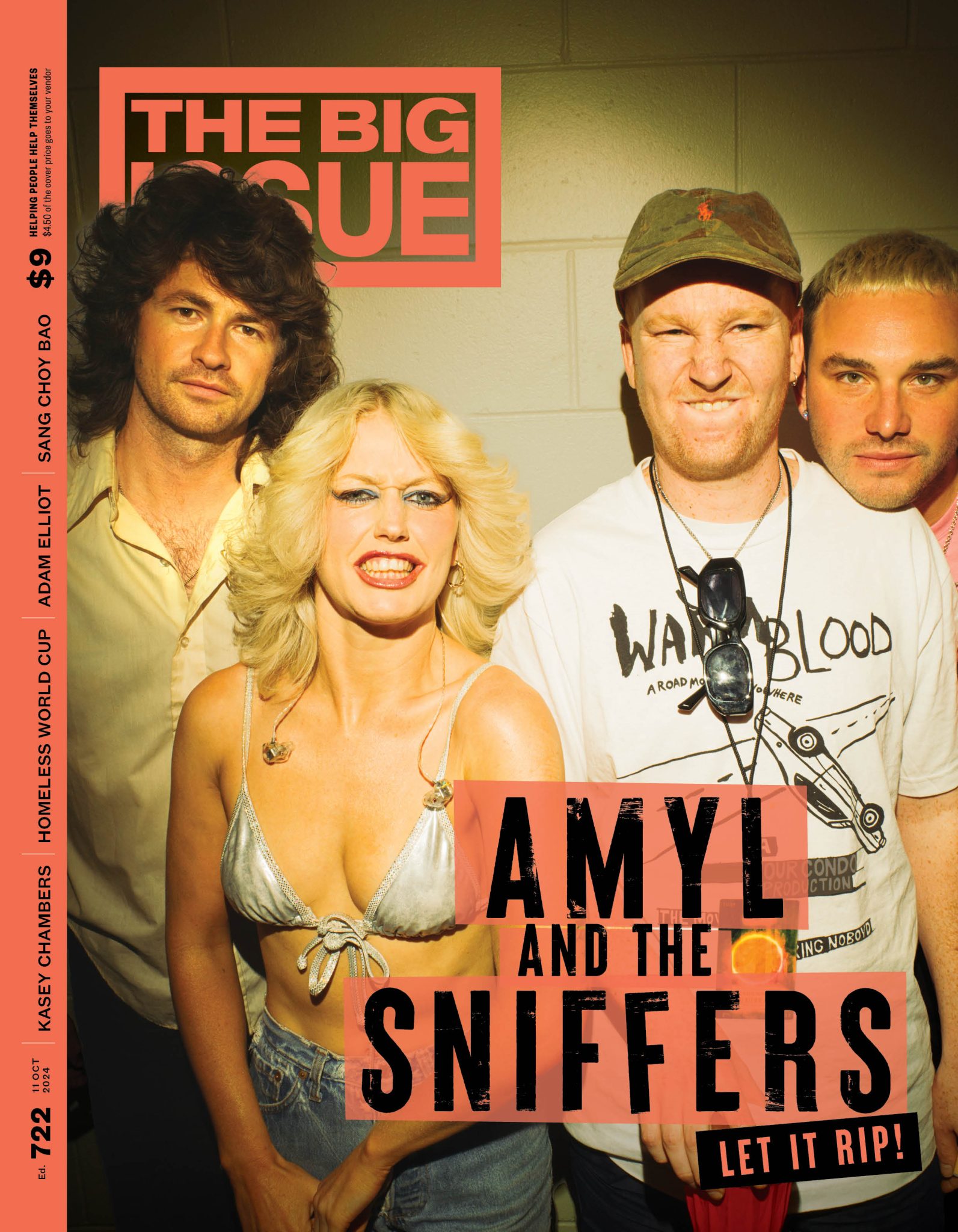This recipe is close to my heart. It is a reminder of time spent with my son in the garden, exploring, observing and learning together.
Damien says…
Growing up in the Flinders Ranges, Adnyamathanha Yarta, we foraged and harvested the fruit of my people, the urti (quandong) or native peach, which is best eaten fresh, cooked or dried. The urti kernel has a delicious almond-like taste and is highly medicinal. It reminds me of country and of childhood experiences with family – especially my grandmother and aunties – who have shaped my identity.
My son, Mallee, shares my enthusiasm for the first flavours of Australia. Exploration starts in the garden – we water plants in every direction around our house and are constantly identifying and discovering new and exciting uses for native ingredients that have cultural significance for Aboriginal and Torres Strait Islander peoples. Geraldton wax and lemon myrtle are two of our favourites. They are both fragrant and citrusy, and easy to add to your cooking repertoire.
Geraldton wax is a shrub endemic to Western Australia with edible ash pink to deep purple flowers and aromatic leaves that taste like pine infused with lemon. Mallee’s facial expression upon eating Geraldton wax is always one of surprise and amazement that the leaves can hold so much flavour. Lemon myrtle on the other hand is a flowering plant endemic to the subtropical rainforests of central and southern Queensland. The leaves have a refreshing citrusy aroma and are perfect for cooking. They are also the purest source of natural citral, thus a powerful essential oil and medicine. Every time we walk by a lemon myrtle plant, I encourage Mallee to softly rub a green leaf between his thumb and index finger to release the crisp smell.
This recipe is close to my heart. It is a reminder of time spent with my son in the garden, exploring, observing and learning together. The three leaves featured are, in our opinion, the queens of citrus, eucalypt and honey flavours. Their perfumes will draw you into the dish. It is a meal we love sharing with family and friends.
Barramundi Poached in Geraldton Wax, Kunzea Flower and Lemon-scented Gum
Serves 2
2 tablespoons olive oil
2 shallots, finely diced
10g Geraldton wax leaves
2 teaspoons dried ground lemon-scented gum
(or 4 whole leaves)
1 teaspoon dried ground white kunzea flower
2 anise myrtle leaves
(fresh or dried)
700ml macadamia milk
½ small fennel bulb, chopped
2 garlic cloves, bruised
2 skinless barramundi fillets
Fragrant Coconut Rice
1 cup (200g) jasmine rice
8 lemon myrtle leaves
(fresh or dried)
½ cup (125ml) coconut cream
To Serve
Sliced finger limes, blood limes and desert limes
Geraldton wax flowers
Lemon myrtle and Geraldton wax leaves
Method
Heat oil in a large saucepan over low heat. Add shallots, Geraldton wax, lemon-scented gum, kunzea and anise myrtle and stir occasionally for 3-4 minutes until softened. This will help to release their oils.
Stir in macadamia milk, fennel and garlic and season to taste with salt and ground pepperberry. Increase heat to medium and bring to a simmer. As broth comes to a simmer, season barramundi on both sides with salt and ground pepperberry.
Reduce heat to low and add barramundi. Cover with a lid and simmer gently for 8-10 minutes, or until barramundi is opaque and flakes easily. Gently remove from broth with a fish slice and place in serving bowls. Strain broth, discarding solids, then pour it over the fish. Top fish and broth with limes, flowers and leaves, and serve with rice.
For the fragrant coconut rice, put rice, 2 cups (500ml) water and lemon myrtle leaves in a saucepan and bring to the boil. Cover with a lid, reduce heat to low and simmer for 5-10 minutes or until liquid is nearly absorbed. Add coconut cream, remove from heat, stir, cover and leave for at least 5 minutes. Remove lemon myrtle leaves and fluff rice before serving.
You’ll find this recipe and more in First Nations Food Companion by Damien Coulthard and Rebecca Sullivan.
First published in ed#678
